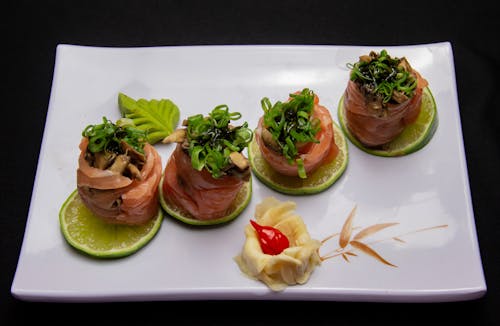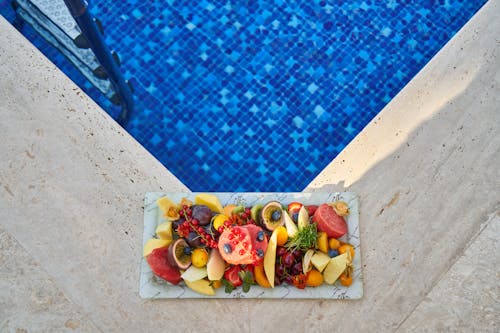The importance of nutrition in our daily life
Second to my adoration for movement is my affection for food.
At the point when I’m ready to drench myself in another culture by enjoying their customary food varieties, I feel associated with them.
Experiencing childhood in Trinidad and Tobago (“Trinbago”), my excursion with food has been assorted naturally. With English, French, and Spanish pilgrim impacts, just as food rehearses from Africa, East India, China, and presently Venezuela, Trinbago’s food is a genuine blend.
Nonetheless, the majority of my proper nourishment schooling zeroed in on the food pyramid and presently the U.S. Division of Agriculture’s (Usda’s) MyPlate guide — ideas that don’t line up with numerous customary dinners.
While MyPlate shows that a reasonable plate ought to be half non-bland vegetables, one-quarter protein, and one-quarter grains, customary one-pot dishes mix these nutrition classes into a supper that can’t be particularly divided on a plate.
For instance, it’s unfeasible to serve pelau — a Caribbean one-pot dish made with caramelized chicken, parboiled rice, pigeon peas, and a variety of vegetables and flavors — inside the MyPlate format.
As a dietitian and food darling, I in this manner became befuddled and baffled when I attempted to make socially skilled quality dinners.
I started to ponder, “Are these conventional dinners genuinely sound on the off chance that they don’t fit the MyPlate shape, or does the acknowledged Western comprehension of solid, adjusted suppers need social capability?”
It wasn’t until ongoing years that I had the option to foster an idea of good dieting that accepts the subtleties of social food varieties and inclusivity.

- I’ll take you with me on pieces of that excursion and show you what I realized.
- Overcoming any barrier between wholesome science and conventional food
Even though I didn’t have the foggiest idea what to call it then, at that point, my advantage in nourishment started as ahead of schedule as age 7 get-togethers mother’s stroke, as I was roused to utilize food as medicine to work on her personal satisfaction.
However, it wasn’t until my job as a dietetic expert that I found my energy for showing people the job that sustenance plays in the administration of their ailments.
In Trinidad and Tobago, these customer schooling meetings zeroed in on better manners to appreciate social food varieties, for example, picking the high fiber dhal puri roti — a customary flatbread — over its high-fat partner, paratha roti.
At the point when I interned in the United States, I had noticed the two dietitians and their customers battle to examine proper food substitutes that regarded the customer’s food culture. This distinction could hamper the customer’s consistency with their nourishment plan and generally achievement.
Not set in stone to overcome this issue, I work to expand nourishment instruction so that individuals can accomplish further developed wellbeing results without leaving their food societies.
My day by day way to deal with nourishment — the two battles and wins
I approach sustenance in my day-by-day existence with adaptability.
At least, the majority of my suppers are adjusted and incorporate a grain, a protein, and vegetables or natural products. I incorporate nearby or provincial food varieties — and I appreciate treats!
Luckily, there are various sound, conventional suppers that make dinner arranging basic, for example, sautéed spinach with taro root and stewed fish.
Concerning one-pot dishes, for example, oil down — a delectable dish made with breadfruit, spinach, carrots, and salted meat like ponytails, my center changes to parcel control, adding high fiber side dishes, and careful eating procedures like focusing on my totality prompts.

My week by week cooking plan
As somebody with thyroid knobs, I frequently experience changes in my energy levels, which may contrarily influence my capacity to plan food sources.
Accordingly, I cook 2–3 times each week, getting ready enough for 1–2 days at a time. On Fridays I request out, on Saturdays, I commonly cook bean soup, and on Mondays, I have extras from Sunday’s lunch.
This is the place where fusing negligibly handled food varieties is vital to making dinner readiness simpler and more advantageous.
I here and there buy pre-hacked vegetables at the supermarket, even though I like to shop at the rancher’s market for new products. Freezing clumps of prepared meat, fish, and cleaved veggies saves time while getting ready suppers, as does including low sodium canned merchandise like fish.
To additional help my thyroid wellbeing, I have diminished my admission of profoundly handled accommodation food varieties and diverted my thoughtfulness regarding entire food sources.
This implied making my heated products without any preparation at home with unbleached, entire wheat flour during the vast majority of 2020 and selecting not to buy frozen waffles and hotcakes.
It likewise implied expanding prebiotic and probiotic food sources like yogurt and having modest quantities of fiber at some random chance to help processing, which might be weakened by thyroid issues.
What are normal misguided judgments about dietitians?
One generalization about dietitians is that we as a whole eat the same way.
Be that as it may, copies are a record-breaking top pick of mine. I partake in each chomp!
On the off chance that I had a dollar for each generalization about dietitians, I’d be set forever. We should scatter only a couple:

Dietitians are not the food police. Indeed, numerous dietitians are adaptable with their own dietary patterns and may urge you to be something very similar. We’re not here to yell you down for having a subsequent making a difference.
Dietitians likewise appreciate treats. Regardless of whether it’s a unique formula or a low-fat variation, pastries are on a dietitian’s menu, as well. (“Would I be able to have another cut of cake, please?”)
Dietitians enhance your wellbeing past weight reduction. Dietitians are regularly counseled for weight reduction yet can likewise show you how to use nourishment to help your ailment or in general wellbeing objectives — with or without zeroing in on your weight.
Latest things in dietetics
Obviously, dietitians aren’t any different either way. We offer plenty of viewpoints and ways to deal with wholesome treatment. While some depend on calorie tallying, others take an enemy of diet course and show their demographic food opportunity and natural eating.
There’s at present a change in the dietetics world toward the Health at Every Size (HAES) approach, which is advanced by the Association for Size Diversity and Health.
HAES perceives that wellbeing is complex and that, paying little heed to your body weight, you have the right to get therapeutically and healthfully fitting aptitude customized to your requirements.
In case you’re keen on seeing a dietitian or nutritionist, it’s prudent to completely investigate the specialists in your space to decide if you’re a decent match.

My #1 food sources and go-to suppers, tidbits, and plans
During my time seeking after a Master’s certification in the United States, I restored nostalgia with customary dinners.
Callaloo — puréed spinach, okra, pumpkin, and green flavors — alongside broiler grill prepared chicken and macaroni pie is my go-to comfort supper.
On the off chance that I need a speedy supper for supper or breakfast, my routine includes entire grain bread, fried eggs or wieners, sautéed vegetables like broccoli or bok choy, as well as a natural product.
Different suppers I appreciate are the recently referenced pelau, oil down, and roti with curried chicken.
While I love the natural product as a bite, I additionally crunch on trail blend, dull or milk chocolate, cut apple with peanut butter, and yogurt.
I sometimes buy neighborhood deals with like tamarind ball (a sweet and hot treat produced using tamarind organic product), kurma (a crunchy flour-based nibble with ginger), and benne ball (made with sesame seeds and molasses).
Besides, I make new squeezes and smoothies at home to appreciate as morning drinks.
Empowering good dieting with a baby
My 3-year-old child loves to cook (any pardon to play with water, truly) and — reward! — having a conversation with him about food is very simple.
He goes along with us in the kitchen and appreciates slashing food varieties, adding things to the juicer, blending the pot, and doling out the food. He’s very canny when breaking eggs, as well — no shells!
Utilizing a partitioned plate with pictures of nutritional categories (similar to this one) was his first prologue to food segments and the idea of a fair plate.
Other innovative methodologies we’ve taken incorporate making products of the soil stamps for our at-home expressions and artworks meetings, just as acquainting our little child with the assortment of in-season foods grown from the ground in Trinidad and Tobago.





GIPHY App Key not set. Please check settings